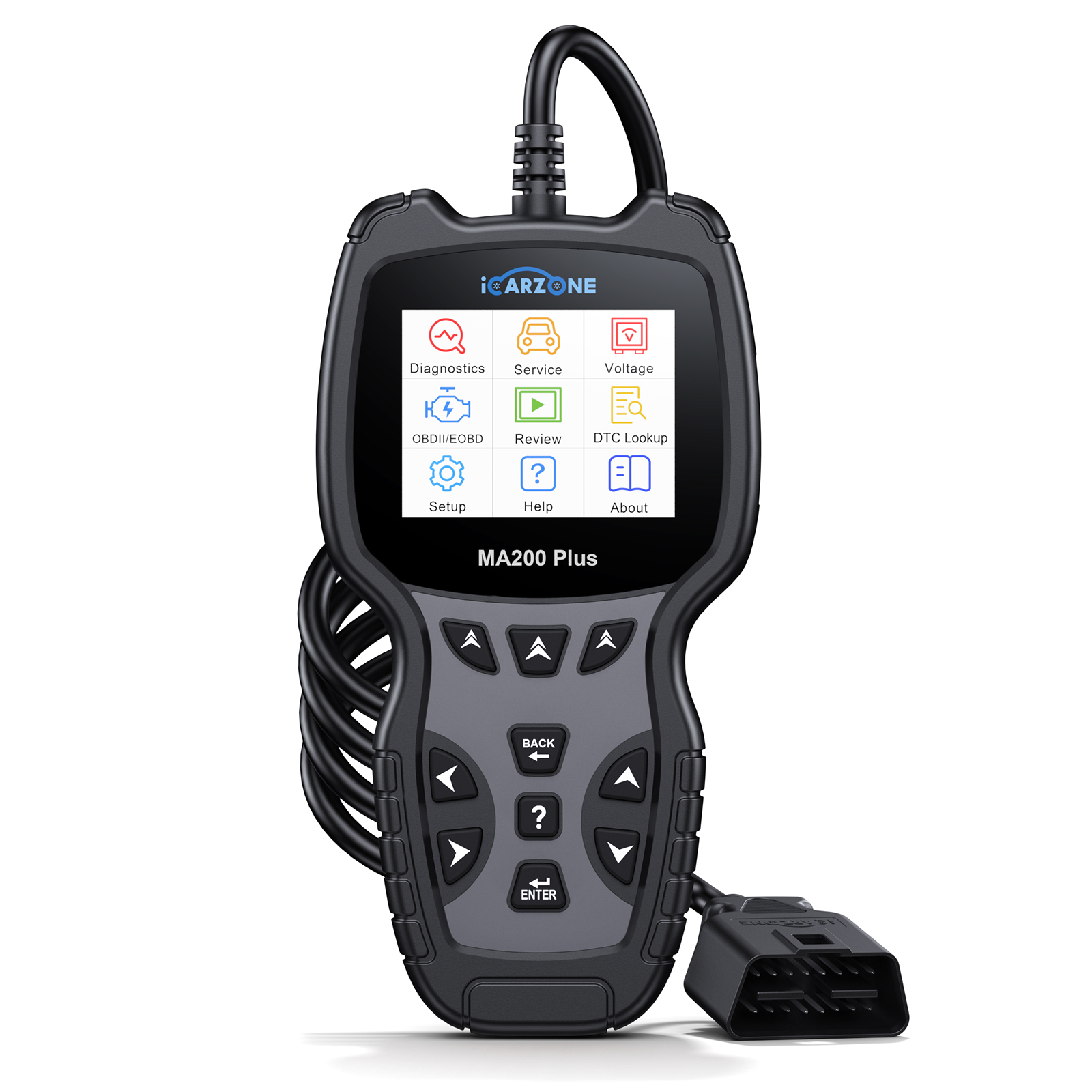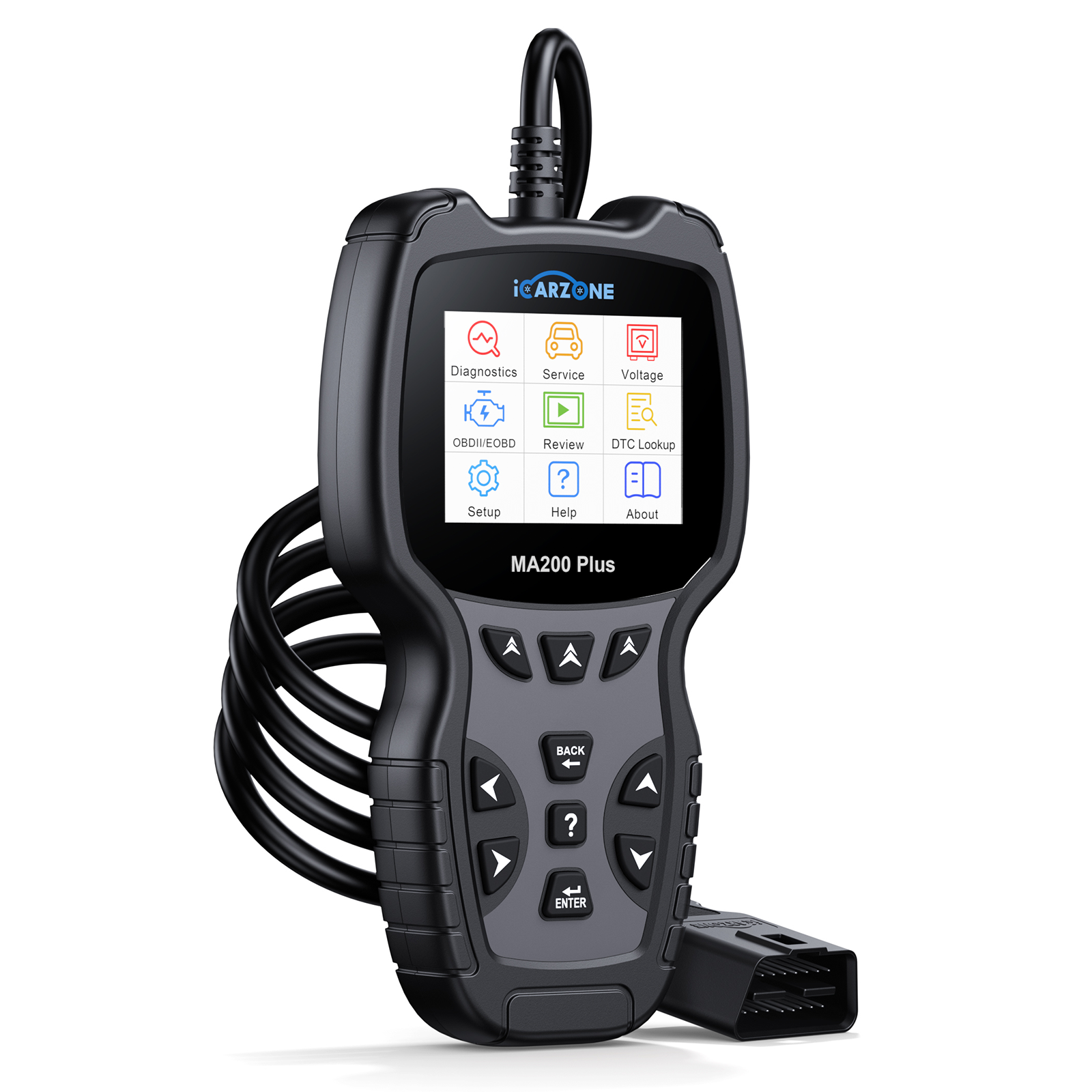Chevrolet Silverado 1500 P0133 Code | Causes, Symptoms & Fixes

P0133: O2 Sensor Circuit Slow Response (Bank 1 Sensor 1)
Resolve P0133 in Chevrolet Silverado 1500. Learn causes, symptoms, and fixes for the upstream oxygen sensor (Bank 1 Sensor 1) using the MA100 diagnostic tool.
Get MA100 Now1. What is P0133?
P0133 is a standard Diagnostic Trouble Code meaning O2 Sensor Circuit Slow Response (Bank 1 Sensor 1). The upstream oxygen sensor (located before the catalytic converter) should switch quickly between low and high voltages (~0.1V–0.9V) as the engine cycles between lean and rich. P0133 is logged when the ECM detects that this sensor's response is sluggish, indicating a slow-switching sensor or related circuit issue.
Why It Matters for Chevrolet Silverado 1500
On 2014–2024 Silverado 1500 models, a slow upstream O2 sensor can cause poor fuel trims, decreased fuel economy, failed emissions, and degraded performance—especially under load while towing. Prompt diagnosis prevents long-term damage to the catalytic converter and avoids failed inspections.
2. Common Causes in Chevrolet Silverado 1500
P0133 is frequently reported on Silverados; below are verified causes and real-world patterns to check when diagnosing:
- Failing Upstream O2 Sensor (Bank 1 Sensor 1) — Sensors degrade over time; contamination by oil or coolant shortens switching speed (slow response).
- Wiring or Connector Faults — Chafed wires or corroded connectors to the O2 sensor cause resistance and delayed signal changes.
- Exhaust Leaks — A leak upstream of the sensor can introduce false oxygen readings and make the sensor appear slow to respond.
- Fuel System Issues — Persistent lean/rich conditions (fuel injector problems, MAF sensor faults) change the O2 waveform and trigger P0133.
- Catalytic Converter Problems — A heavily clogged converter changes downstream response and can indirectly affect upstream diagnostics; inspect both.
3. Key Symptoms in Chevrolet Silverado 1500
Owners commonly report the following when P0133 is present—use these clues to prioritize O2 sensor checks:
- Check Engine Light (CEL) illuminated with stored P0133
- Poor fuel economy — MPG drops noticeably under normal driving
- Rough idle or hesitation during acceleration
- Failed emissions or readiness monitors not setting
- Occasional surging or unstable RPM under light load
4. Silverado 1500 Models Prone to P0133
Across 2014–2024 Silverados, some variants report higher instances of O2-sensor-related codes due to usage and engine characteristics:
- 2014–2019 Silverado 1500 5.3L EcoTec3 — frequent towing & higher accumulated miles increase sensor wear
- 2020–2024 Silverado 1500 2.7L Turbo — turbocharged engines can create richer conditions that stress upstream sensors
- 2016–2022 Silverado 1500 6.2L V8 — higher fuel consumption and towing loads accelerate sensor contamination
- 2015–2018 Silverado 1500 4.3L V6 — older sensors often reach end-of-life and show slow switching
Tip: If your truck sees heavy towing or short-trip urban use, check the upstream O2 sensor earlier than routine maintenance intervals.
5. Diagnostic Steps (Silverado 1500 Focus) with MA100
Use the MA100 for focused upstream O2 testing. Below is a practical diagnostic table to follow:
| Step | Action with MA100 | Silverado 1500-Specific Goal | Pass/Fail Criteria |
|---|---|---|---|
| 1 | Full system scan > Select "Chevrolet" > "Silverado 1500" > "Engine" | Confirm P0133 and check for related codes (e.g., P0420, P0171, P0172) | Pass: Only P0133 present | Fail: Multiple fuel trim or catalyst codes (broader issue) |
| 2 | Live Data > "O2 Sensor Bank1 Sensor1 Voltage" (graph mode) | Observe waveform switching at idle and WOT | Pass: Rapid switching between ~0.1V and ~0.9V | Fail: Slow/flat response or stuck reading |
| 3 | Component Test > "Heater Circuit" > Read sensor resistance/heater draw | Verify heater energizes within spec for cold starts | Pass: Heater draws within spec and sensor warms quickly | Fail: Open heater or high resistance |
| 4 | Fuel Trim & Live Data > Check short/long-term fuel trims | Detect persistent lean/rich which can alter O2 waveform | Pass: Trims within +/- 10% | Fail: Trims beyond ±10% (investigate MAF/injectors) |
| 5 | Visual & Wiring Check > Inspect harness near exhaust and connectors | Find chafing, corrosion, or exhaust leaks upstream of sensor | Pass: Clean connector, intact wiring | Fail: Damaged wiring or leak found |
Case Example: A 2017 Silverado 5.3L showed slow switching at warm idle. MA100's live graph revealed delayed transitions; heater test was OK. Visual inspection found a small exhaust manifold gasket leak — repair restored correct waveform and cleared P0133.
Diagnose P0133 with MA1006. Fixes & Execution for Chevrolet Silverado 1500
Remedies depend on root cause; below are reliable, cost-effective fixes that technicians and DIYers use:
- Replace Upstream O2 Sensor (Bank 1 Sensor 1) — If MA100 shows slow switching or out-of-spec heater, replace with a quality OEM-equivalent sensor. After replacement, clear codes and confirm waveform with MA100.
- Repair Wiring & Connectors — For chafed or corroded harnesses, replace damaged sections and use dielectric grease to protect connectors from moisture.
- Fix Exhaust Leaks — Repair manifold/gasket leaks upstream of the sensor; even small leaks can corrupt oxygen readings.
- Address Fuel / Air Issues — If trims show persistent lean/rich, inspect MAF, fuel pressure, and injectors before blaming the O2 sensor.
- Inspect Catalytic Converter — If converter is clogged or damaged, it can change downstream behavior and complicate diagnosis—replace if necessary.
Silverado 1500-Specific Workflow
- Start with MA100 live data to avoid unnecessary O2 replacement—many P0133 cases are caused by wiring or exhaust leaks, not the sensor itself.
- Perform a controlled test drive after repairs and record MA100's O2 waveform to confirm fast switching under different RPM/load conditions.
- When replacing the sensor, use OEM or high-quality equivalents and torque sensor threads to manufacturer spec to avoid exhaust leaks.
7. Repair Costs & Safety Tips for Silverado 1500
Upstream O2 Sensor (bank 1 sensor 1): $60–$220 (depending on OEM vs aftermarket)
Wiring Repair Kit: $15–$45 (connectors, heat-shrink, loom)
Exhaust Gasket / Manifold Repair: $30–$150 (parts)
Professional Replacement (parts + labor): $150–$400
MA100 Diagnostic Tool: Cost varies — MA100 provides O2 live graphing, heater tests, and DTC clearing for DIYers and pros.
Critical Safety Precautions
- Work on a cooled exhaust system—exhaust components are extremely hot after driving.
- When unplugging O2 sensors, avoid damaging the wiring; use proper O2 sensor sockets when removing sensors.
- Clear codes with MA100 and perform a full readiness check before returning the vehicle to service.
8. Preventive Maintenance for Silverado 1500 P0133
Reduce P0133 risk with these practical steps:
- Annual O2 Sensor Check — Use MA100 to graph O2 response and confirm switching speed, especially after 60,000 miles.
- Inspect Exhaust & Wiring During Service Intervals — Check for leaks and harness abrasion near the manifold.
- Fix Oil/Coolant Leaks Promptly — Sensor contamination often comes from engine leaks; address them to extend O2 life.
- Address Fuel/Air Issues Early — Replace dirty MAF sensors and keep injectors in good condition to avoid abnormal O2 behavior.
9. Frequently Asked Questions
No—P0133 itself won't void warranty coverage. However, if the underlying cause (e.g., oil leaks) is neglected and causes secondary damage, warranty coverage may be impacted. If under warranty, coordinate repairs with a dealer.
Indirectly—severe air intake restrictions can alter fuel trims and oxygen readings. Replace the air filter before assuming the O2 sensor is at fault.
Yes—MA100 supports O2 sensor live data, heater circuit checks, and DTC reading/clearing across common Silverado engines (5.3L, 6.2L, 2.7L, 4.3L) for 2014–2024 models.
Simple wiring or gasket repairs: 1–2 hours. Sensor replacement: 1–2 hours. Complex fuel or catalytic issues: may take longer. Using MA100 typically reduces diagnosis time.
10. Summary
P0133 (O2 Sensor Circuit Slow Response — Bank 1 Sensor 1) is a common, diagnosable issue on 2014–2024 Chevrolet Silverado 1500 models. Common causes include aging upstream sensors, wiring/connector faults, exhaust leaks, or fuel/air irregularities. The MA100 makes targeted diagnosis simple with O2 waveform graphing, heater tests, and live fuel-trim monitoring—helping you avoid unnecessary parts replacement and get the truck back to proper running condition. Prioritize inspection of wiring and exhaust upstream of the sensor before replacing parts.
Diagnose & Fix P0133 with MA100
MA100 offers O2 sensor live data, heater circuit testing, and DTC lookup to resolve P0133 quickly. Ideal for DIYers and pro techs working on Silverado fuel and emissions systems.
Order MA100 TodayRelevant long-tail keywords included: "P0133 Chevy Silverado O2 sensor slow response fix", "MA100 O2 sensor diagnostic for Silverado", "how to diagnose P0133 with MA100".









